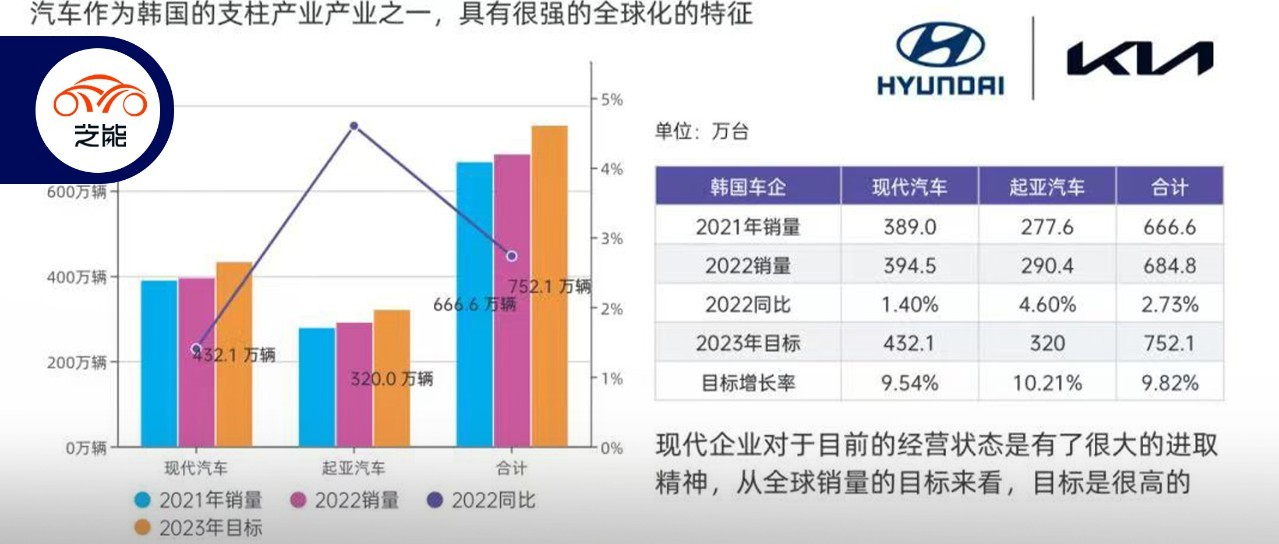Evaluation of the Top 10 Annual Electric Vehicle Achievements of Zhineng Automobile
by Taoyanyan
1. Representative of radical transformation: Volkswagen
2. Brand power is being overdrawn: BMW
3. More luxurious than luxury cars: Mercedes-Benz
4. Diversified development of global sales champion: Toyota
5. Remember to defend while attacking: Tesla
6. Development of purely electric line is in doubt: Honda
7. Focusing on the Chinese and American markets: General Motors
Annual evaluation of electric vehicle transformation (Part 8): Hyundai-Kia. Due to the relatively mediocre performance of Korean cars in the Chinese market, many readers may sneer at Korean cars. However, we were pleasantly surprised to find that Hyundai-Kia’s performance in 2022 was very impressive globally — Hyundai Motor Group ranked third in the world with a total global sales volume of 68,481,980 units in 2022.
- Hyundai Motor’s total sales were 3,945,000, a 1.4% increase compared to the previous year.
- Kia’s total sales were 2,903,000, a 4.6% increase compared to the previous year.
Hyundai-Kia’s target for 2023 is to increase sales by nearly 10%, reaching a sales volume of 7,521,000. Although this data is not enough to threaten Volkswagen, it does widen the gap with the second-tier manufacturers and enters the first-tier of sales volume.
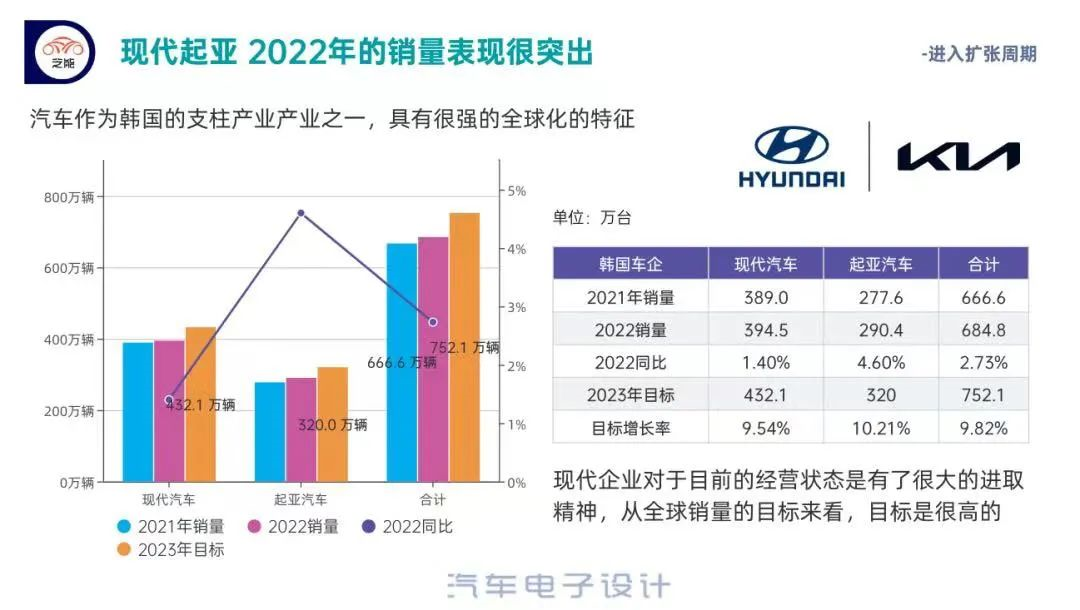 ## Global Sales Analysis of Hyundai-Kia
## Global Sales Analysis of Hyundai-Kia
Underperforming in the Chinese market, Korean cars turned out to be a surprise performer worldwide this year. Moreover, Hyundai-Kia’s pure electric vehicles are doing well in the market with a total of 180,000 vehicles sold, which dared to directly push 800V EMP platform to the market.
- Sales of more than 100,000 units for two pure EV models, IONIQ 5 and IONIQ 6.
- Annual sales of EV6 from Kia almost reached 80,000.
- In the field of hydrogen energy, Hyundai Motor’s fuel cell vehicle NEXO has a global annual sales record of 10,000 units, up 22% year-on-year, with a market share of 59% and a cumulative total of 30,000 units sold. Like Toyota, Hyundai Motor has been running alone around the hydrogen strategy of the Korean government, and accumulating technological reserves in this field.
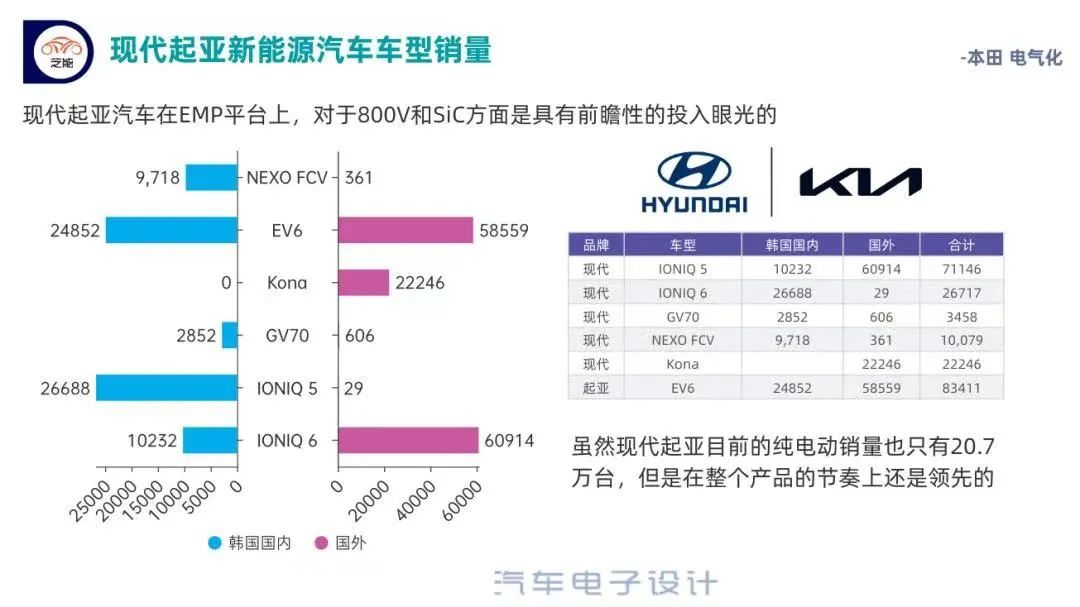
From the perspective of 2022, Hyundai and Kia’s sales records are respectively:
- Hyundai Motor: 689,000 domestically and 3.256 million abroad.
- Kia Motors: 541,000 domestically and 2.363 million abroad.
In other words, Hyundai-Kia sold a total of 1.23 million vehicles domestically and 5.618 million abroad. For every vehicle sold in Korea, they also sold 4.57 vehicles overseas, which is a very good achievement. If we make a further breakdown, we may understand it more in the chart below.
- A year-on-year increase of 4.2% in Europe, with a sales record of 1.061 million vehicles, of which Hyundai sold 518,600 vehicles (up 0.5% year-on-year) and Kia sold 542,400 vehicles (up 7.9% year-on-year). Their joint market share in Europe has increased to 9.4%, ranking fourth.
- Sales of Hyundai-Kia in the U.S. decreased by 1% year-on-year, totaling 1.474 million vehicles, of which Hyundai sold 780,700 vehicles (down 0.9% year-on-year) and Kia sold 693,500 vehicles (down 1.1% year-on-year).
- Hyundai-Kia sold 804,000 cars in India, of which Hyundai sold about 550,000 and Kia sold 251,000.## Of course, in China, the combined sales of modern Kia are only around 300,000, which has become a relatively small market, and this is also where we have some misunderstandings about Korean cars.
Therefore, we can understand that modern Kia has seized the global shortage of new cars. The problems of European, American, and Japanese automakers in the global supply chain have created certain sales advantages for Korean cars in Latin America, the Middle East and Asia-Pacific (except China, Japan, and South Korea). This is currently where modern Kia is very successful.

Modern Kia’s Electric Vehicle Strategy
Looking at the global distribution of modern Kia, it is basically divided into one-third in Europe, one-third in the United States, and one-third in South Korea.
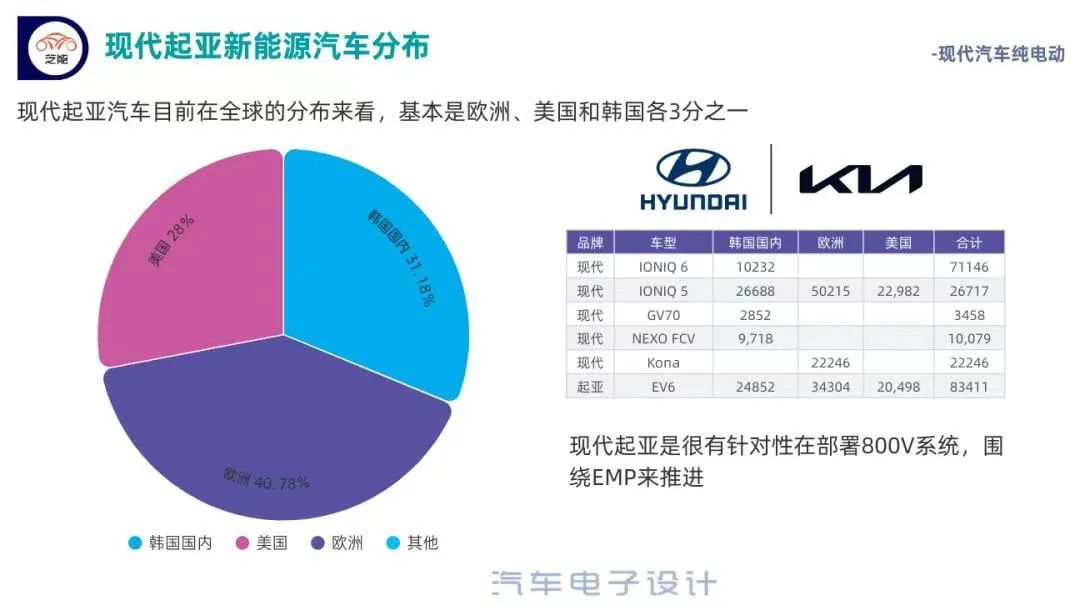
United States
In 2022, modern Kia sold 182,600 electrified vehicles in the United States, a year-on-year increase of 65.1%. Hyundai sold 98,443 units, an increase of 31.2%, and Kia sold 84,200 units, a significant increase of 136.3%. In terms of fuel types:
◎Sales of electric vehicles were 58,000 units, with a significant increase of 196.2%. Among them, the sales of modern Ioniq 5 were 22,982 units, and the EV6 sold 20,498 units, basically consisting of these two models.
◎Sales of hybrid vehicles were 124,200 units, an increase of 37.1%.
◎Hydrogen fuel cell vehicles were 408 units, a decrease of 5.1%.
Modern Kia is also preparing to build a pure electric vehicle factory in North America and establish a battery factory in the United States. These are all steps for modern to develop new energy vehicles.
Europe
Modern Kia sold 143,500 electrified vehicles in Europe in 2022, an increase of 5.9% year-on-year. Among them, two important models, Ioniq 5 sold 50,210 units, and Kia’s EV6 sold 34,300 units, and Kona EV has also sold well.### Korea
The main volume of new energy vehicles in Korea is 74,300 units, including:
◎ Hyundai IONIQ 6: 10,232 units
◎ Hyundai IONIQ 5: 26,688 units
◎ Hyundai GV70: 2,852 units
◎ Kia EV6: 24,852 units
◎ NEXO FCV: 9,718 units
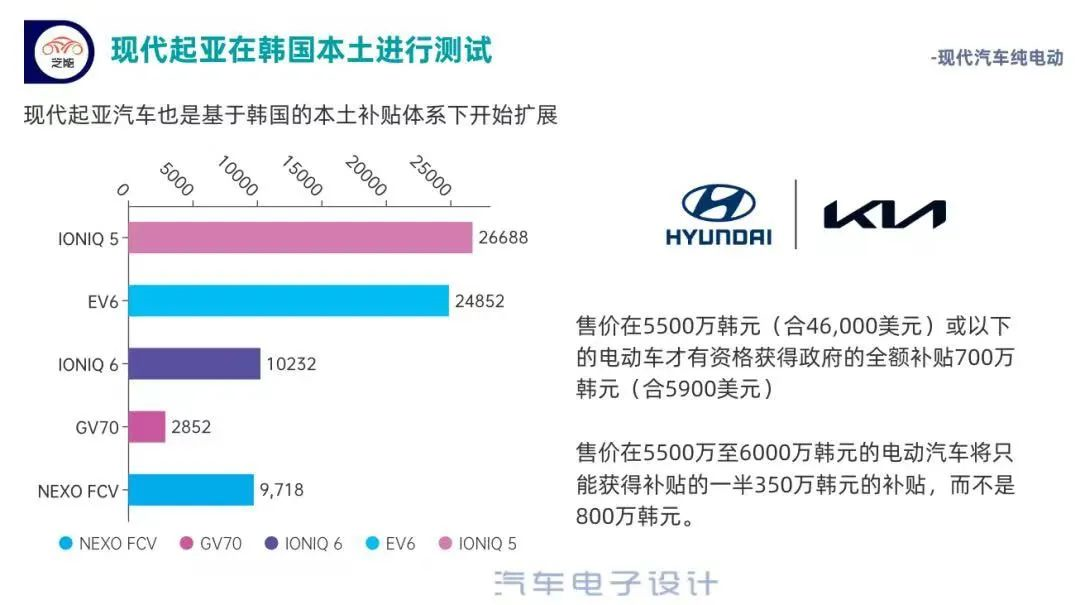
From the current perspective, the direction of the EMP platform is correct, and Hyundai Kia is also accelerating its deployment in the United States and Europe. Hyundai Kia is generally taking a clever approach by strictly promoting pure electric vehicles in areas with stringent carbon emissions while promoting oil vehicles in other regions, using a layered sales model.
Summary: Hyundai Kia’s strategy in the field of electrification has been very resolute. However, what we need to pay attention to is that it has not abandoned oil vehicles, and it is still trying to expand its scale by meeting the demand of Asia, Africa, and Latin America regions.
This article is a translation by ChatGPT of a Chinese report from 42HOW. If you have any questions about it, please email bd@42how.com.
